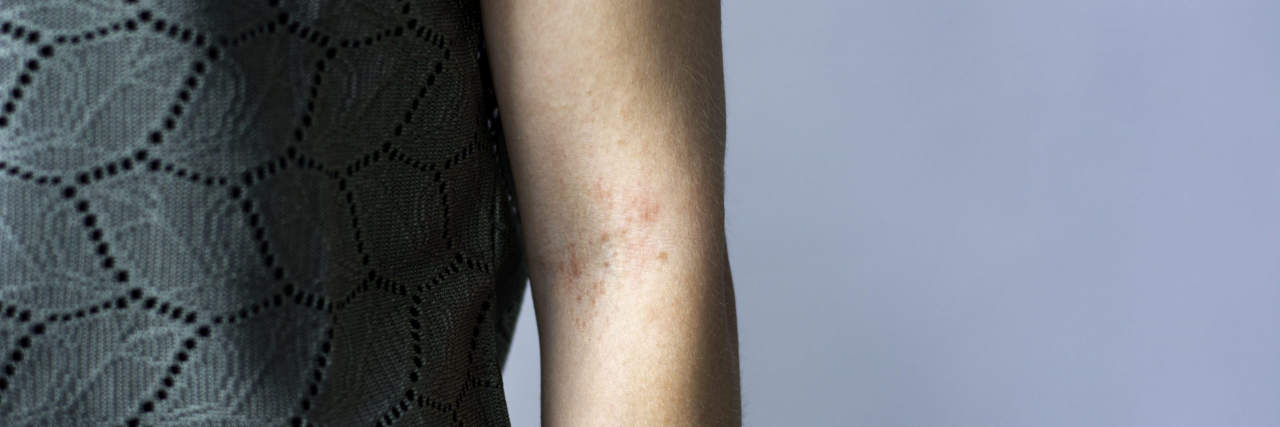Alagille syndrome (AGLS) with cholestatic pruritus is a rare genetic disorder caused by abnormalities in the liver’s bile ducts. It is a rare disease, with only between 3,000 and 30,000 cases in the United States, according to the National Institutes of Health. Structural abnormalities in the liver cause reduced flow of the digestive enzyme bile out of the liver (cholestasis). Bile then builds up in the liver, leading to liver damage and uncontrolled itching (pruritus).
People with AGLS either have fewer or misshapen bile ducts that prevent enough bile from passing from the liver into the small intestine. Bile backing up into the liver can cause scarring, nutrition absorption problems, and prevent toxins from being properly cleaned from the body.
Bile plays an important role in helping the body flush out toxins as it works to remove waste from the blood. It is comprised of several materials including water, electrolytes, bile salts, cholesterol, phospholipids, and bilirubin, which is produced when the body breaks down red blood cells. Bile also plays a part in digesting fats and fat-soluble vitamins like A, D, E, and K.
AGLS is primarily a disorder of the liver but can impact the heart, kidneys, skeleton, eyes, and facial features. Children born with the syndrome tend to have an inverted triangular face, featuring a high, prominent forehead, pointed chin, deep, wide-set eyes, and a straight nose with a bulbous tip.
In the 1960s researchers pinpointed a mutation of chromone 20 as the likely cause of AGLS. Further research identified changes to a gene called Jagged1 in people with Agaille. It is autosomal dominant, so can be inherited from only one parent who carries the genetic trait for the disorder.
Because Alagille is so rare, for patients and families, setting up a knowledgeable healthcare team to guide care can be a challenge. In her personal story, Mighty contributor Mia Carella shares hope that the process is improving.
“We often get questions from doctors. The thorough and interested doctors often inform us that they will ‘read up’ on it after our appointment. At this point my husband and I can have a little laugh when we realize we have stumped yet another medical professional, but it hasn’t always been that way. In the beginning I would feel frustrated and worried that I knew more about the condition affecting my children than the people caring for them. Things have improved over the years, and as knowledge about Alagille syndrome and awareness grows, things will continue to get easier. This is my hope for all families affected by rare diseases and conditions.
Some people with AGLS find they experience intense itching called cholestatic pruritus. This sensation is caused by the buildup of bilirubin and bile salts in the bloodstream, which triggers certain nerve impulses. The itching may or may not be accompanied by jaundice or other symptoms, and it can range from mild to extremely severe.
For Mighty contributor Kristen Baugher, pruritus is just one of a host of symptoms her daughter battles. She explains in her letter to Alagille syndrome:
“You’ve created an invisible pain itching in my daughter’s body that causes day-and-night suffering. You keep her body from growing and thriving. You keep us from sleeping and resting. You threaten so many parts of her that it’s hard to keep up.”
The itching almost never improves on its own and a doctor might recommend the use of medications called antipruritics. Although many people think antihistamines relieve itching, they have not been found to be effective in reliving the itch of cholestatic pruritus, although they may provide relief through sleep. In some cases, the itching may be so severe a doctor will recommend a liver transplant.
There is no cure for AGLS so treatment is centered on symptom and lifestyle management. Nutrition and vitamin supplementation is an important piece, as most people are unable to absorb all the necessary nutrients from a regular diet. Children, in particular, may need to supplement with vitamins A, D, E, K, in addition to calcium and zinc. Talk to your doctor before beginning any supplements, however, as some blood levels will need to be monitored. Vitamin K can be toxic to the liver in high doses and should only be taken under medical supervision.
To help with the urge to itch consider:
- Keeping your or your child’s skin moisturized, especially with emollient creams.
- Using a cooling cream, either purchased or homemade from menthol crystals and aqueous cream.
- Taking a cool shower or placing a cool, wet towel on skin.
- Using an anti-itch cream
- Wearing loose, cotton clothing. Avoid wool, which can be itchy.
- Keeping nails short and clean in case you do need to scratch an itch.
Have advice about dealing with the itch of cholestatic pruritus? Add them in the comments below!

